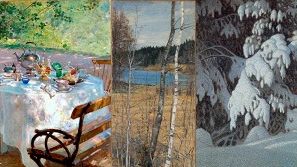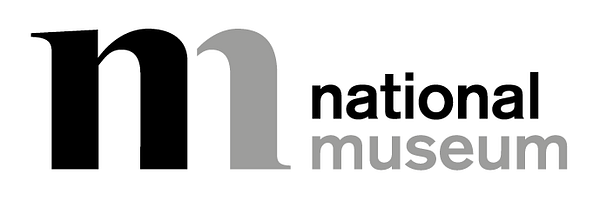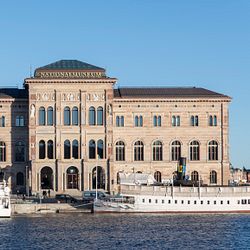
Press release -
The Four Seasons opens 21 June
The Four Seasons, a thematic
exhibition of works from Nationalmuseum’s own collections, opens on 21
June. The exhibition focuses on depictions of the seasons in paintings
of the fin de siècle period and on artists’ attempts to capture
the essence of the changing seasons. Featured artists include Bruno
Liljefors, Anders Zorn, Carl Larsson, Prince Eugen, Anna Boberg, Gustaf
Fjæstad, Hanna Pauli, Helmer Osslund and Elsa Beskow.
The Four Seasons presents a number of paintings from the
late 19th and early 20th centuries depicting the changing seasons.
Visitors will see how the artists devoted their efforts to capturing the
distinctive features of each season. How many different colours can
snow be? How do the colours change in a twilight image? How to depict
autumn leaves, or spring light trickling through tender foliage? The
featured artists include well-known names such as Bruno Liljefors,
Anders Zorn, Carl Larsson, Prince Eugen, Anna Boberg, Gustaf Fjæstad,
Hanna Pauli, Helmer Osslund and Elsa Beskow. Exhibits comprise over 100
works from Nationalmuseum’s collections. Although the emphasis is on
painting, exhibits also include sculpture and applied art of the period.
Mystical, suggestive scenes, frequently inspired by historical events or legends of saints, dominated European art at the end of the 19th century. In the Swedish version, often termed national romanticism, artists and writers found their motifs in Sweden’s nature, history and folk customs associated with seasonal tasks and festivals. Fear of emigration and urbanization was part of the background to this upsurge in cultural nationalism, with many intellectuals believing they had a duty to inspire the public to love their native land. Much of what we today regard as essentially Swedish originated in this period. National-romantic patriotism, centred on the landscape, cultural heritage and poetic values, was long associated with radical politics. But with the First World War and the modernist breakthrough of the 1910s, it soon came to be seen as an increasingly conservative stance.
The distinctive nature of the different seasons became a common artistic motif, and the cold winter, the long spring and the light summer evenings came to epitomize something that could be called typically Swedish. In depicting the seasons, artists had a choice of strategies. One was precise, scientifically accurate, naturalistic observation, a technique perfected in the 1880s by artists such as Bruno Liljefors and Anders Zorn. The alternative strategy, common in the 1890s, involved a broader depiction of light and colour conditions, a more atmospheric type of painting in which details were blurred out – more about capturing line and mood than reproducing reality. The low light typical of Sweden’s long spring and summer evenings features in many well-known paintings by Richard Bergh, Karl Nordström, Anshelm Schulzberg and Prince Eugen. The winter night, illuminated by the reflective snow, was a motif that Gustaf Fjæstad and his fellow members of the Rackstad group made their own.
The exhibition runs from 21 June 2011 to 27 May 2012.
The exhibition curators will be giving an introductory presentation on Tuesday 21 June at 2 pm and 6 pm.
Further information
Mikael Ahlund, exhibition curator, mad@nationalmuseum.se, +46 8 5195 4454
Linda Hinners, exhibition curator, lhs@nationalmuseum.se, +46 8 5195 4404
Carl-Johan Olsson, exhibition curator, cjon@nationalmuseum.se, +46 709 67 67 93
Martin Olin, exhibition curator, mnon@nationalmuseum.se, +46 8 5195 4355
Hanna Tottmar, press officer, htr@nationalmuseum.se, +46 8 5195 4390
Anna Jansson, press officer, ajn@nationalmuseum.se, +46 8 5195 4391
Book a press viewing
Journalists can request a guided tour of the exhibition by emailing htr@nationalmuseum.se or calling +46 8 5195 4390/4391.
Captions
Hanna Pauli, Breakfast-Time, 1887; Prince Eugen, Leafing, 1891; Gustaf Fjæstad, Winter Moonlight, 1895.
Categories

